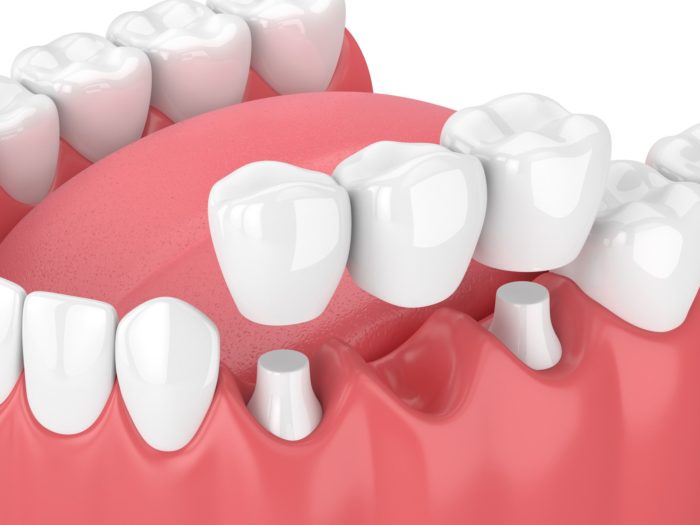Dental bridges are a type of false teeth that replace missing teeth. They are a popular restorative option to restore the look and function of your teeth. Dental bridges use your remaining natural teeth to secure the appliance in your mouth. Therefore, they quite literally “bridge” the gap between your missing teeth.
You can get dental bridges if you are missing one or more teeth. A dental bridge is made of a pontic (false tooth) and uses natural teeth for support. The pontic portion of the bridge typically uses dental crowns to make the structure. Additionally, the crowns help cement the bridge in place.
No matter where you are missing teeth, you can find a dental bridge as a replacement. The most common type of dental bridge is a traditional fixed bridge. If you are missing your front teeth, you can use a Maryland dental bridge, which uses resin for bonding. Even if you only have a tooth on one side of the gap, you can use a cantilever bridge. There is even a type of bridge that uses dental implants to hold a bridge in place—an implant-supported bridge.

Advantages of Dental Bridges
Because dental bridges cement to your teeth, they don’t shift as you speak or eat. This can go a long way in making your life easier. Not only does this boost your confidence, but this can also allow you to move through your life without worry. Imagine going to a restaurant and not having to stress over your dinner selection or having to hold a conversation. Your teeth will stay put all night long.
Dental bridges are permanent fixtures. This means that you don’t have to take them out at night. Dentures are a replacement option that you must remove and clean nightly. While some people might enjoy the freedom of removing their dentures, many people don’t like having to mess with their dentures constantly. Therefore, dental bridges offer security and convenience.
Compared to dental implants, dental bridges are a minimally invasive procedure. For many bridges, a dentist will need to remove part of the supporting teeth to install a crown. You do not have to undergo surgery to get dental bridges.
Disadvantages of Dental Bridges
One of the disadvantages of dental bridges is that you will need to have them replaced at some point. In fact, the average life of a dental bridge is about five to seven years. However, if you keep a thorough oral care routine, your dental bridge can last up to 10 years.
Dental bridges do require a different oral care routine than normal. To keep your gums healthy, you will need to floss underneath the bridge. Otherwise, plaque can build up and cause infection or gum disease. You may need a special type of floss that will help slide underneath the bridge.
In many ways, dental bridges are the middle ground between dentures and dental implants.
